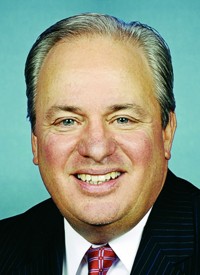Advertisement
Grab your lab coat. Let's get started
Welcome!
Welcome!
Create an account below to get 6 C&EN articles per month, receive newsletters and more - all free.
It seems this is your first time logging in online. Please enter the following information to continue.
As an ACS member you automatically get access to this site. All we need is few more details to create your reading experience.
Not you? Sign in with a different account.
Not you? Sign in with a different account.
ERROR 1
ERROR 1
ERROR 2
ERROR 2
ERROR 2
ERROR 2
ERROR 2
Password and Confirm password must match.
If you have an ACS member number, please enter it here so we can link this account to your membership. (optional)
ERROR 2
ACS values your privacy. By submitting your information, you are gaining access to C&EN and subscribing to our weekly newsletter. We use the information you provide to make your reading experience better, and we will never sell your data to third party members.
Policy
Public-Access Debate Continues
Supporters and opponents of free access to all federally funded published research argue anew at congressional hearing
by Britt E. Erickson
August 16, 2010
| A version of this story appeared in
Volume 88, Issue 33

The pros and cons of expanding a National Institutes of Health policy that requires all scientific literature containing results of NIH-funded research to be freely available within 12 months of publication were debated at a hearing in the House of Representatives late last month. A subcommittee of the Committee on Oversight & Government Reform held the hearing to discuss the implications of increased access to journal articles that contain results of federally funded research.
Advocates of expanding NIH’s policy to all federal agencies argued that the public should have free access to journal articles that result from research funded by taxpayer dollars. These proponents—who included representatives from small start-up companies, nonprofit organizations, and secondary schools—all said they need access to the scientific literature but can’t afford to subscribe to the myriad high-priced journals currently on the market.
Publishers, on the other hand, don’t necessarily oppose public access but worry that federal mandates don’t allow enough of an embargo period to allow them to recoup the costs associated with online publishing and archiving. Publishers traditionally offset such costs through subscriptions, although, in light of the public-access movement, some are experimenting with alternative business models, such as requiring authors to pay a fee to publish an article.
Momentum for public access has been growing steadily this year. In April, Rep. Michael F. Doyle (D-Pa.) reintroduced legislation that would expand the NIH policy to all federal agencies. The Federal Research Public Access Act of 2010 (H.R. 5037) would require federal agencies with extramural research budgets of at least $100 million to provide free online access to journal articles containing research they fund within six months of publication—six months earlier than NIH’s current policy.
When asked what effect a shortened embargo time would have on publishers, Allan Adler, vice president of government and legal affairs at the Association of American Publishers, told lawmakers, “There is no one-size-fits-all embargo period that would make sense in journal publishing across the diverse economic models that exist for publishers.” The American Chemical Society, which publishes C&EN, is a member of AAP.
Similarly, Steven J. Breckler, executive director for science at the American Psychological Association, noted that the shelf life of new articles in the social and behavioral sciences is longer than in other fields of science. “We have suggested that 12 months is too short” of an embargo period, Breckler said. “Six months would probably be devastating.”
Taking a strong stance against public access was committee member Rep. Carolyn Maloney (D-N.Y.), who claimed it would threaten the U.S.’s intellectual property. “It’s an American product,” she stressed, referring to the publication of results from federally funded research. “If you open it up to everyone—meaning patients, but also I would say, Vietnam, China, and the entire world—then we are going to be economically disadvantaged. We have to protect our intellectual property,” she said.
Proponents presented lawmakers with some of the benefits of increased public access. Sir Richard Roberts, chief scientific officer of New England Biolabs, testified that many small start-ups can’t afford to subscribe to all scientific journals. “Without comprehensive access to the literature, it is impossible to know where the cutting edge of science lies,” he pointed out. “This lack of access has a deleterious impact on the small start-up biotech companies and others for whom cutting-edge science is their bread and butter.”
Roberts also made the case for increased access to the scientific literature for students in liberal arts colleges and secondary schools, which also can’t afford to subscribe to all science journals.
Another case was made by Sophia Colamarino, vice president for research at Autism Speaks, an advocacy group. She said that when she left her academic research position in 2004 to join Autism Speaks, she lost free access to a large portion of the scientific literature. Opening up access to federally funded research “has the potential to greatly enhance the ability of scientists like me, who, quite simply, require access to scientific results to be effective,” she noted.
It is unlikely that Congress will pass a bill to increase public access to federally funded research publications this year. Many of those in favor of increased access are therefore hoping that the White House will take matters into its own hands. To that end, the Office of Science & Technology Policy launched a public forum last December to gather input on various public-access options, but the office has yet to put forth any policy proposals.



Join the conversation
Contact the reporter
Submit a Letter to the Editor for publication
Engage with us on Twitter